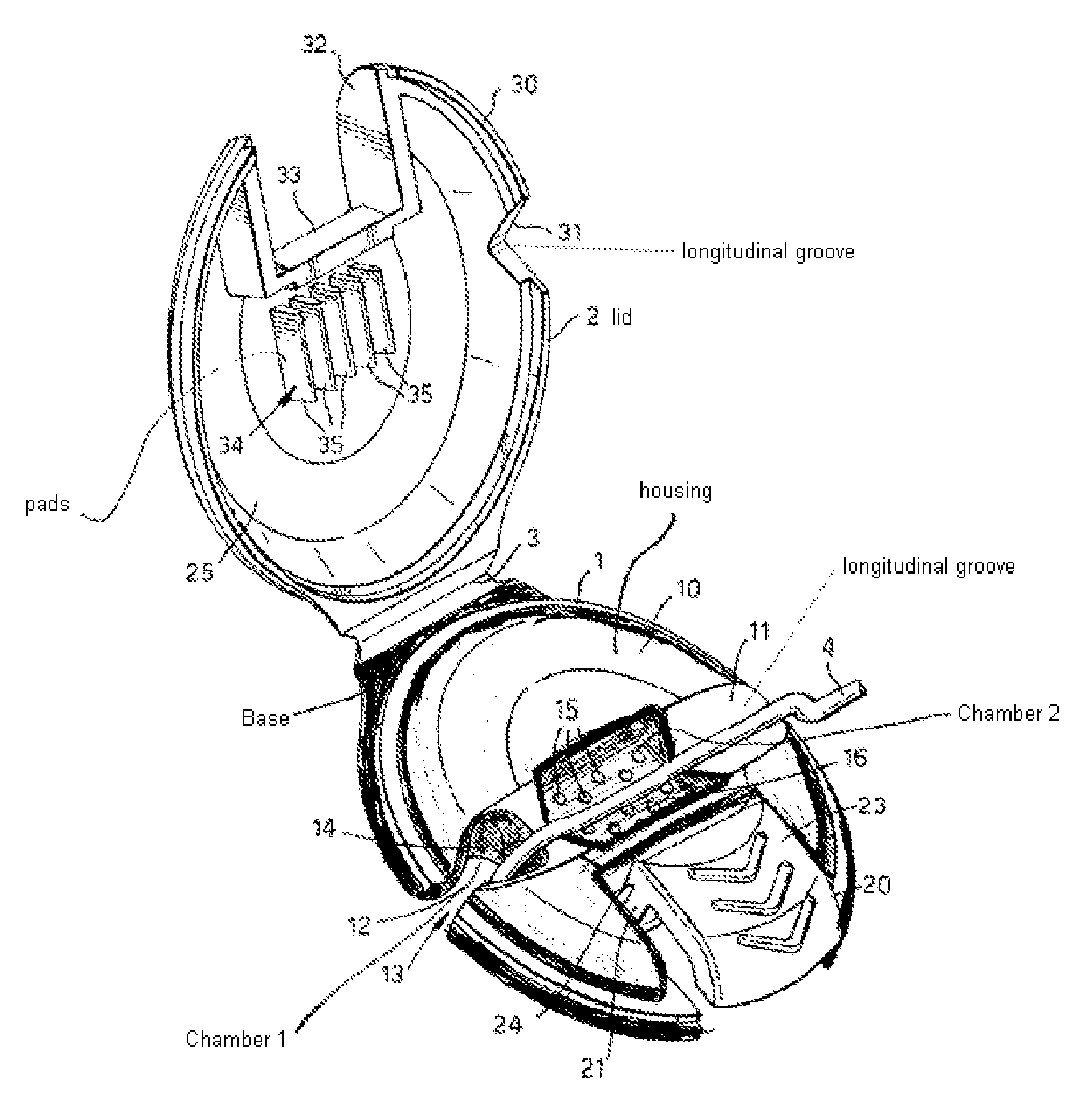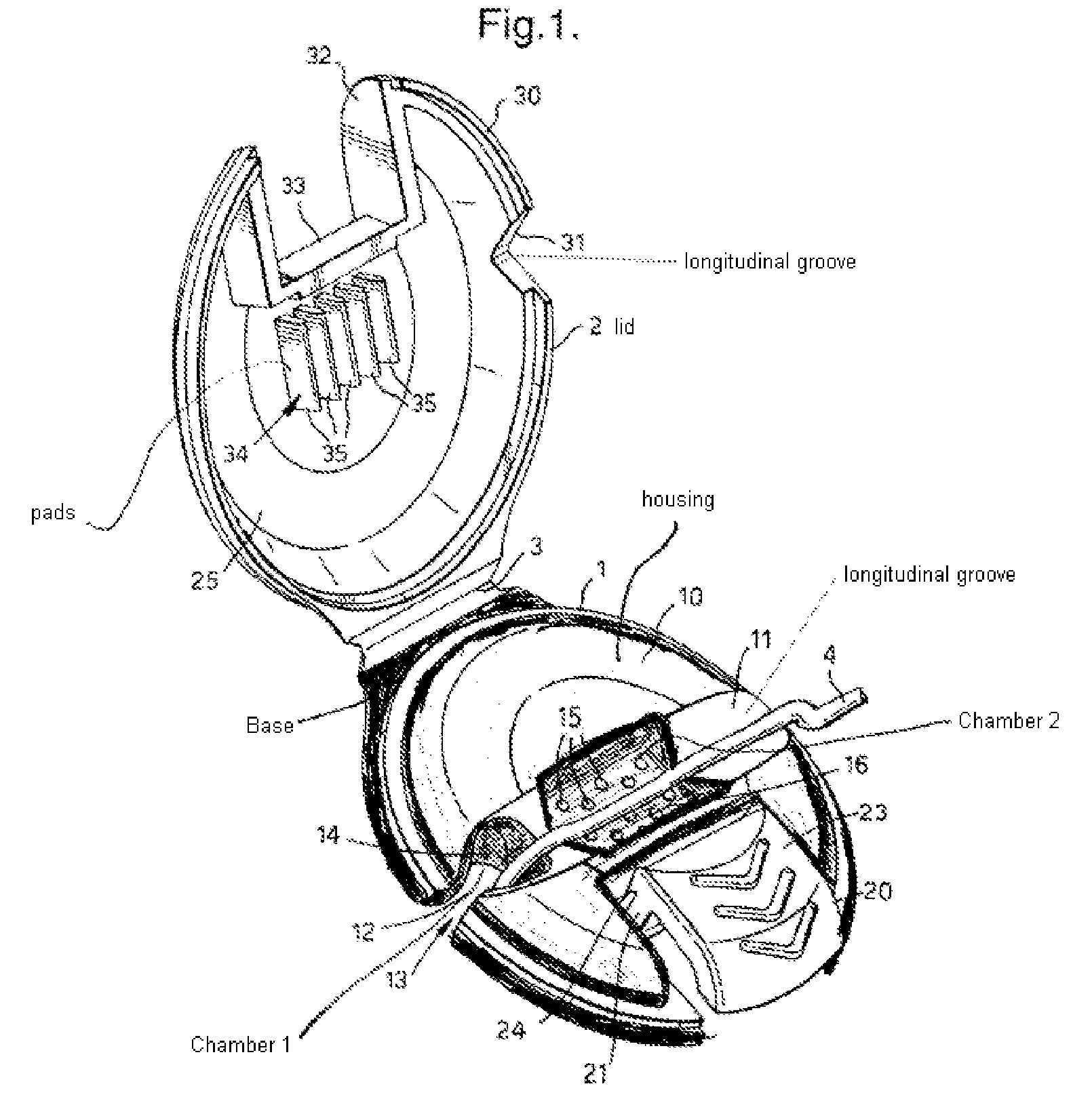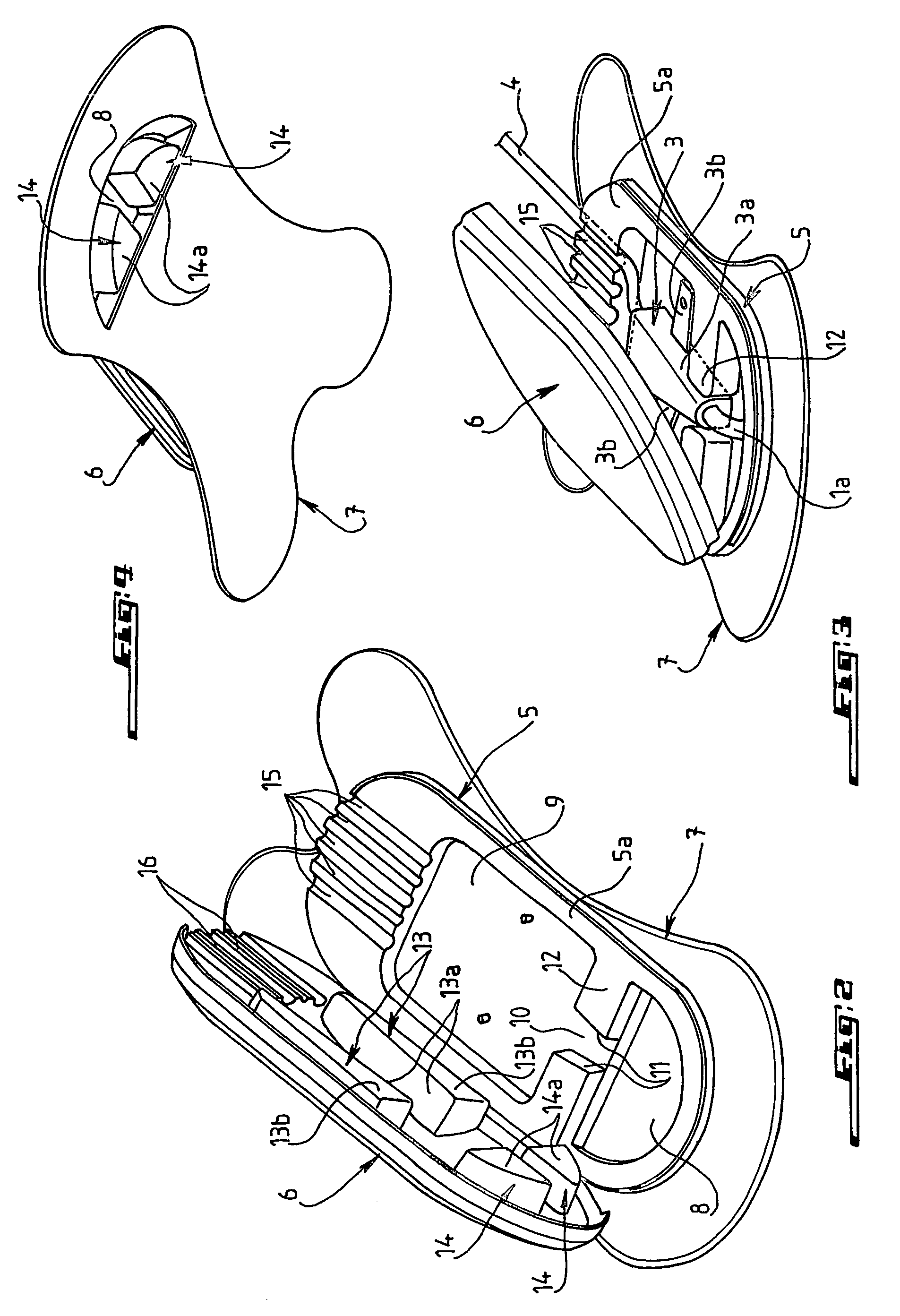Device for fixing a catheter to the body of a patient
a technology for fixing catheters and patients, which is applied in the direction of intravenous devices, infusion devices, infusion needles, etc., can solve the problems of reducing mobility, generating difficulties, and associated risks for operators, namely intensive care personnel and nurses
- Summary
- Abstract
- Description
- Claims
- Application Information
AI Technical Summary
Benefits of technology
Problems solved by technology
Method used
Image
Examples
first embodiment
[0063]According to this first embodiment, the base 7 is shaped, in a top view, so that it comprises two support holdfasts 7a, each in the shape of an ear, which are located opposite the chamber 8 and an opposite bent part 7b, which is adjacent to the chamber 8. The lid 6, and consequently the housing 5, presents, in a top view, a rectangular shape with bent ends.
[0064]The placement of the above-described device is carried out as follows. After the catheter 1 has been placed in the large vein, the reservoir 3 and the external part 1a of the catheter 1 are introduced through the chamber 8 of the housing 5, and the reservoir 3 is embedded in the passage 10 with application against the bottom of the chamber 9. Then, the external catheter(s) 4 is (are) connected to the reservoir 3 and arranged in their respective grooves 15, unless they are already connected to the latter when delivered, in which case the catheter(s) 4 is (are) first introduced through the window 8 before being arranged ...
third embodiment
[0068]According to FIGS. 6 and 7, the housing 5 is flat, as in the preceding embodiments, and in a top view it is in the shape of a semicircle which is extended by two parallel sides which are connected by a transverse side which defines the back wall of the housing 5 opposite the bent front wall, and the second chamber 9, which opens directly into the chamber 8, is defined by a slender hollow part with a semicircular transverse cross section, formed in the upper wall 5a of the housing 5 by extending perpendicularly to the right lateral wall of the chamber 8, of semicircular shape when seen from above. The hollow part 9 can taper from the end which opens into the chamber 8 to receive the sleeve-shaped catheter base 31 of the catheter 1, in the present case of the peripheral or arterial venous type with single channel, that is a single external catheter is connected to the catheter base 31. The latter can have a general truncated tapered shape paired to the reception chamber 9. The t...
second embodiment
[0069]The base 7 for fixation of the housing 5 is defined by four ear-shaped parts 7a, which are arranged symmetrically with respect to the longitudinal median plane of the device. The latter can comprise a flexible membrane 17, which constitutes the bottom of the chamber 8, as in the
PUM
 Login to View More
Login to View More Abstract
Description
Claims
Application Information
 Login to View More
Login to View More - R&D
- Intellectual Property
- Life Sciences
- Materials
- Tech Scout
- Unparalleled Data Quality
- Higher Quality Content
- 60% Fewer Hallucinations
Browse by: Latest US Patents, China's latest patents, Technical Efficacy Thesaurus, Application Domain, Technology Topic, Popular Technical Reports.
© 2025 PatSnap. All rights reserved.Legal|Privacy policy|Modern Slavery Act Transparency Statement|Sitemap|About US| Contact US: help@patsnap.com



